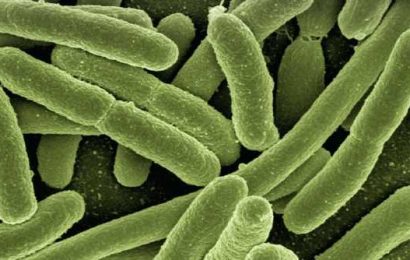The value of whole-exome sequencing as a first-tier genetic test in the diagnosis of skin disorders
In a recent article published in BMC Medical Genomics, researchers recruited a cohort of 25 Chinese genodermatoses patients to examine the genetic etiology by whole-exome sequencing (WES).
They evaluated the clinical utility of WES as a tool with the potential to expedite the discovery of the genetic variations underlying all skin disorders to aid genetic counseling and prenatal diagnosis efforts.
 Study: Whole-exome sequencing enables rapid and prenatal diagnosis of inherited skin disorders. Image Credit: Immersion Imagery/Shutterstock.com
Study: Whole-exome sequencing enables rapid and prenatal diagnosis of inherited skin disorders. Image Credit: Immersion Imagery/Shutterstock.com
Background
Genodermatoses are a conglomerate of specific or non-specific skin disorders caused by genetic mutations in a single gene.
Researchers have identified over 1,000 monogenic skin disorders, which are highly clinically variable, with clinical symptoms ranging from a generalized phenotype (severe) to a predominantly acral blistering phenotype (mild).
Even though some genodermatoses conditions are visually recognizable, e.g., neurofibromatosis, most patients with the same monogenic disorder have different clinical features, which makes disease diagnosis based on clinical manifestations and dermatopathological features very challenging for clinicians.
Clinical heterogeneity of genodermatoses also hinders its precise molecular diagnosis, which, in turn, hinders clinicians from providing genetic counseling to individuals at risk of inheriting these skin diseases.
Conventional genetic testing involves Sanger sequencing for genomic deoxyribonucleic acid (gDNA) analysis, which is a low throughput and time-consuming method; thus, it cannot meet the needs of molecular diagnosis of more than 1,000 genes associated with skin disorders.
Overall, there is an unmet need for a method that expedites the discovery of genetic variations to facilitate diagnoses in dermatology, including genodermatoses, which affect different parts of the skin in different ways, i.e., having high clinical heterogeneity.
About the study
In the present study, researchers enrolled 25 patients with hereditary skin diseases at Southwest and Xinqiao Hospitals in Chongqing, China, between January 2018 and December 2020.
First, they made physical examinations and health assessments of the probands and their families. Next, they collected peripheral blood samples from the patients, their families, and healthy controls for DNA extraction using a Wizard Genomic DNA purification kit.
The team performed WES on all gDNA samples and mapped sequencing reads to the reference human genome to identify single-nucleotide polymorphisms (SNPs). Further, they evaluated the pathogenicity of SNVs according to American College of Medical Genetics (ACMG) guidelines.
Furthermore, the researchers used Sanger sequencing to confirm their results and perform prenatal diagnosis.
To this end, they obtained fetal amniotic fluid from the pregnant participants by amniocentesis under ultrasound monitoring during 16–18 weeks of gestation.
Results
The Online Mendelian Inheritance in Man (OMIM) database has
compiled over 500 distinct Mendelian skin disorders subclassified into several phenotypic categories.
The authors found that 25 cases with hereditary skin disorders evaluated in this study fell into four phenotypic categories: tumor predisposition, a disorder of cornification, epidermolysis, and abnormal pigmentation, of which tumor predisposition was most common and occurred in nine of 25 cases, i.e., 36% of cases.
Within the tumor predisposition category, there were five and four cases of neurofibromatosis (NFs) and tuberous sclerosis complexes (TSCs), respectively.
WES accurately diagnosed nine known and nine novel variations in 16 of 25 genodermatoses patients. Of these, 12 variations had a genetic origin, and one even had a de novo origin. Around 48% of the 25 cases had positive family histories, so WES's diagnostic yield was likely higher than the traditional WES diagnostic rate (64% vs. 20-50%).
In addition, WES results helped uncover the pattern of inherited skin diseases in this Chinese province, which could serve as a clinical guide for dermatologists.
Based on WES results, researchers also performed genetic counseling and prenatal diagnosis for six pregnant women. In case #10, WES helped identify a genetic mutation in the asymptomatic mother and her daughter. Sanger sequencing also confirmed this prenatal diagnosis.
Unfortunately, nine of 25 cases remained without any molecular diagnosis. The unavailability of family history also made it tedious to find the genetic origin of the disease.
Conclusions
To conclude, the study data extended the genetic variation spectrum of genodermatoses by discovering nine novel pathogenic allelic variants.
The study investigation also confirmed the clinical application of WES as a diagnostic strategy aimed at expediting the identification of the genetic etiology of skin diseases and improving their prenatal diagnosis.
Indeed, WES could be an efficient and economical frontline clinical test for skin disorders, especially genodermatoses, in outpatient multidisciplinary dermatologic clinics.
-
Xintong, Z. et al. (2023) "Whole-exome sequencing enables rapid and prenatal diagnosis of inherited skin disorders", BMC Medical Genomics, 16(1). doi: 10.1186/s12920-023-01628-2. https://bmcmedgenomics.biomedcentral.com/articles/10.1186/s12920-023-01628-2
Posted in: Genomics | Medical Science News | Medical Research News | Medical Condition News | Disease/Infection News
Tags: Amniocentesis, Amniotic Fluid, Blood, Dermatology, Diagnostic, DNA, DNA Extraction, DNA Purification, Exome Sequencing, Gene, Genes, Genetic, Genetics, Genome, Genomic, Genomics, Mutation, Neurofibromatosis, Nucleotide, Phenotype, Prenatal, Sanger sequencing, Sclerosis, Skin, Tuberous Sclerosis, Tumor, Ultrasound

Written by
Neha Mathur
Neha is a digital marketing professional based in Gurugram, India. She has a Master’s degree from the University of Rajasthan with a specialization in Biotechnology in 2008. She has experience in pre-clinical research as part of her research project in The Department of Toxicology at the prestigious Central Drug Research Institute (CDRI), Lucknow, India. She also holds a certification in C++ programming.


